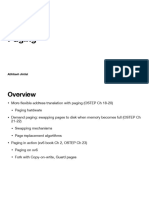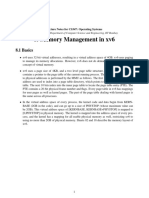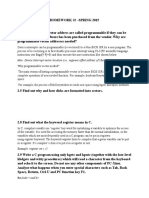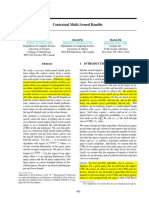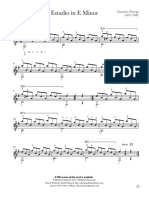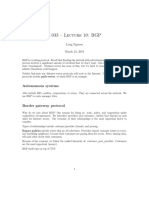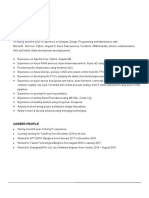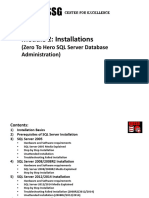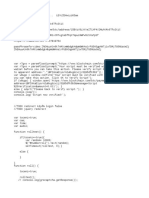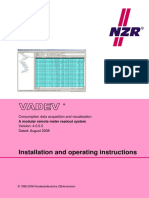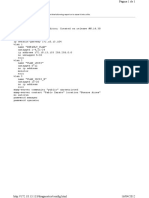0% found this document useful (0 votes)
697 views2 pagesAnswers Lab2
This document contains the answers to Lab 2 questions for the 6.828 Operating Systems course at MIT. It discusses:
1) The appropriate type for a variable used to dereference a pointer returned from a function is uintptr_t, not physaddr_t.
2) The page directory has been filled with mappings for the top 4MB of physical memory, the kernel space section, and kernel stacks.
3) The CPL bits and permission bits in the CS register protect the kernel's memory from user programs.
4) The maximum physical memory supported is 256MB due to the kernel virtual address space layout.
5) Managing 256MB of physical memory would require 3MB of overhead for the PageInfo
Uploaded by
Long NguyenCopyright
© © All Rights Reserved
We take content rights seriously. If you suspect this is your content, claim it here.
Available Formats
Download as TXT, PDF, TXT or read online on Scribd
0% found this document useful (0 votes)
697 views2 pagesAnswers Lab2
This document contains the answers to Lab 2 questions for the 6.828 Operating Systems course at MIT. It discusses:
1) The appropriate type for a variable used to dereference a pointer returned from a function is uintptr_t, not physaddr_t.
2) The page directory has been filled with mappings for the top 4MB of physical memory, the kernel space section, and kernel stacks.
3) The CPL bits and permission bits in the CS register protect the kernel's memory from user programs.
4) The maximum physical memory supported is 256MB due to the kernel virtual address space layout.
5) Managing 256MB of physical memory would require 3MB of overhead for the PageInfo
Uploaded by
Long NguyenCopyright
© © All Rights Reserved
We take content rights seriously. If you suspect this is your content, claim it here.
Available Formats
Download as TXT, PDF, TXT or read online on Scribd
/ 2



